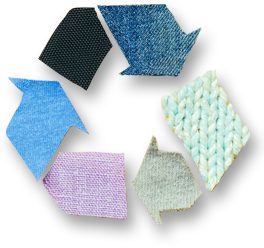Materials and Energy Recovery Division
Materials and Energy Recovery Division (MER) encourages research and development that will advance the practice of sustainable waste management in the U.S. and abroad; and improve processes for maximum recovery of materials and energy from solid wastes.

About
ASME’s Material & Energy Recovery Division: Waste-to-Energy Is A Viable Renewable
The United States Environmental Protection Agency (USEPA) defines renewable energy as an energy production system that uses fuel that can be naturally replenished at the scale it is used and does not diminish [1]. In America, approximately 262 million tons of Municipal Solid Waste (MSW) is generated in one year and this number continues to increase . Using materials that have historically been abundant and are foreseen to be continuously available as fuel should leave no argument against WTE facilities being a renewable energy. It has been proven through scientific carbon-14 methods (ASTM D6866 protocol) that typical MSW WTE stack emissions, that routinely meet the Maximum Achievable Control Technology (MACT) standards, contains up to 65% biogenic carbon dioxide, i.e. renewable bio-carbon. Overall, including the materials that are recovered through WTE, every ton of MSW converted to energy is one ton of carbon dioxide avoided.
For every ton of MSW that is combusted in a WTE facility we generate about 600 kW of electricity that offsets other fuels. WTE generation of carbon dioxide is equivalent or better than the combustion of natural gas. MSW that is not combusted or recycled goes to a landfill, where methane gas is generated which is 23 times more a potent greenhouse gas that of carbon dioxide.
WTE facilities also recover metals that are recycled. WTE plants recover nearly 700,000 tons of ferrous metal for recycling. Ferrous recovery avoids carbon dioxide emissions and saves energy compared to the mining of virgin materials for manufacturing new metals. The residual ash produced by WTE contains a large amount of metals that can be recovered and put back into the material cycle. These metals range from common iron, aluminum and copper yet are in large amounts. For example in one MSW combustion facility there is approximately 6,300 tons of aluminum, 3,400 tons of iron and 440 tons of copper. Multiply this by the 76 plants currently operating in the US and it is obvious there is a significant driver to incorporate this into the recycling industry.
______________________________________________________________
The former technical division known as the Solid Waste Processing Division has voted to change its name to the Materials And Energy Recovery Division, or the "MER Division of ASME." The new Name was approved unanimously by the 6 member division Executive Committee on October 22, 2009.
It's guiding principle is "Engineers for Sustainable Waste Management."
The objectives of the MER Division reflected in their bylaws are:
- To encourage and foster research and development that will advance the practice of sustainable waste management in the U.S. and abroad; and improve processes for maximum recovery of materials and energy from solid wastes.
- Collect, peer review, and disseminate accurate information on sustainable waste management and Materials and Energy Recovery from wastes through professional conferences.
- Cooperate with other established professional organizations and groups in the development of codes and standards.
- Establish and maintain liaison with universities, government, industry and environmental groups.
- Promote proper management practices for the ultimate disposal of solid waste materials.
The MER Division's primary activities include co-sponsorship of select meetings related to waste to energy and sustainable waste management. MER actively participates in developing students to learn and pursue careers in those areas by providing scholarships and with the close association with the U.S. based Waste to Energy Research and Technology Council (WTERT) and Earth Engineering Center at City College.
View the division's white paper, "Waste-to-Energy: A Renewable Energy Source from Municipal Solid Waste," which was delivered to several elected legislators on Capitol Hill.
[1] USEPA, National Overview: Facts and Figures on Materials, Wastes, and Recycling. https://www.epa.gov/facts-and-figures-about-materials-waste-and-recycling/national-overview-facts-and-figures-materials
Honors & Awards
The division recognizes outstanding individual and organizational technical contributions to the profession through its honors and awards program.
The Division sponsors up to three (3) awards per year:
- Distinguished Service Award
- Facility Recognition Award - Facility Award Application
- Medal Of Achievement
- Floyd Hasselriis 2023-2024 Educational Support Program - July 31, 2023 Application Deadline!
For all Division Award requests please contact the Division staff administrator.
Important Award Information For Recipients of Monetary Awards
Please note that honorariums cannot be distributed without receipt of applicable tax forms. If you are a recipient of a monetary award, you will be contacted by ASME staff regarding tax forms you will need to complete, as well as how to submit them to us.
Links
White Paper
View the division's white paper, "Waste-to-Energy: A Renewable Energy Source from Municipal Solid Waste", which was delivered to several elected legislators on Capitol Hill.
Other Resources
Links to helpful online resources related to the division are below. If you have suggestions for other resources, please contact the division chair or ASME staff.
Landmarks, sites and collections of historic importance to mechanical engineering are designated by ASME through its History and Heritage Landmarks Program.
Related Associations
- Waste-To-Energy Research & Technology Council
- U.S. EPA Office of Solid Waste
- Integrated Waste Services Association
- The American Academy of Environmental Engineers